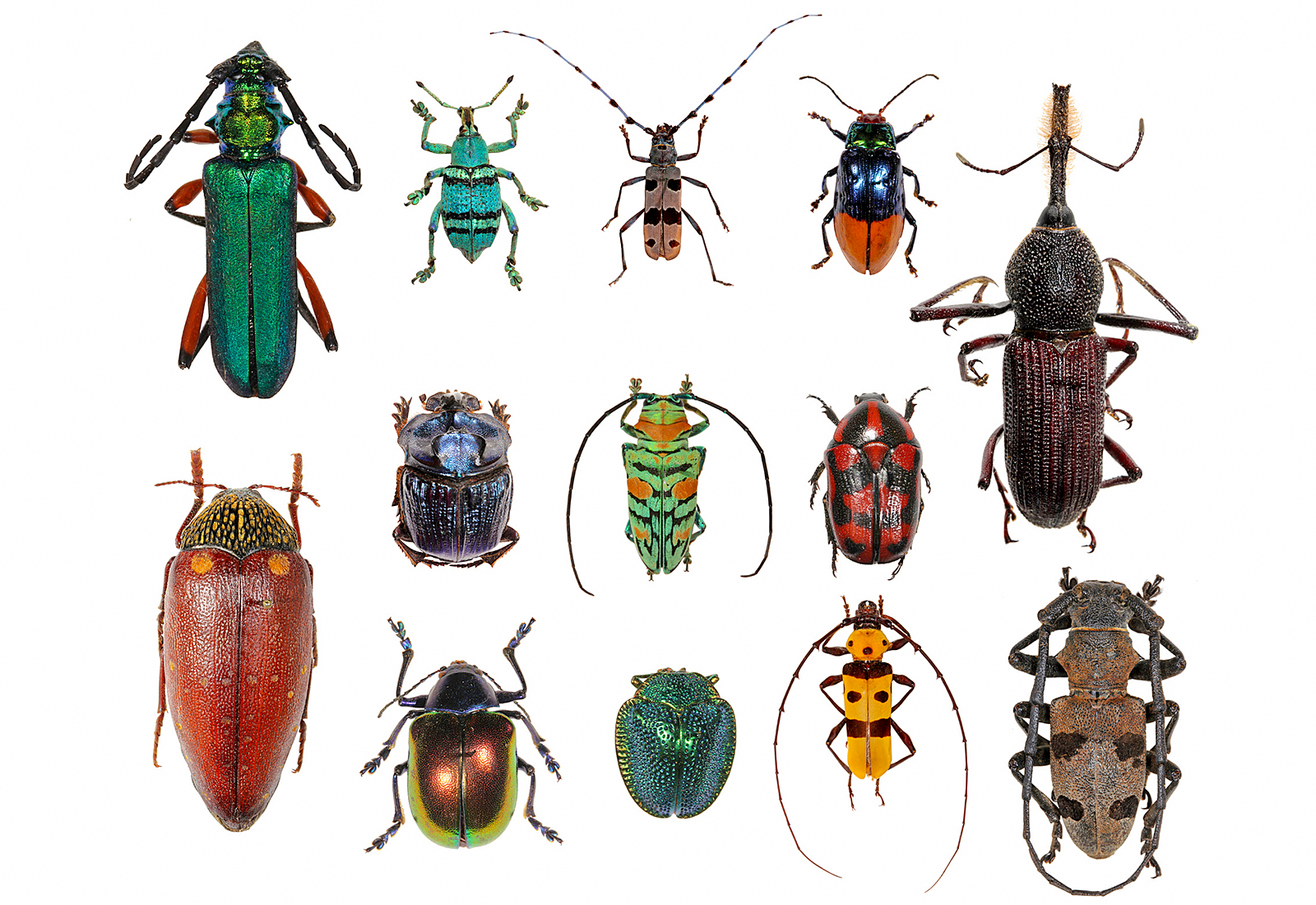Anybuggy looking for some funky facts on insects? Or are you a reformed bug slayer looking to find out why creepy crawlies matter? Look no further — from insect-inspired tech to bugs that can brainwash, here are some interesting learnings from the recent Bugs 101 On Demand webinar, featuring biological sciences professor Maya Evenden, along with Ilan Domnich, ’13 BCom, ’18 BSc(Spec), Joelle Lemmen-Lechelt, ’02 BA(Hons), ’07 BSc(Hons), ’14 PhD, and Valerie Marshall, ’17 BSc(Hons), as presenters and content experts.
What if bugs were pet-sized?
We’re glad they aren’t, although that wasn’t always the case. Some 300 to 350 million years ago, dragonflies had wingspans that measured almost 75 centimetres. That’s the back length of a German shepherd. Arthropleura, a type of extinct millipede, grew to 2.6 metres long. “Being small isn’t necessarily a bad thing,” says Lemmen-Lechelt. From an evolutionary perspective, the creatures’ much smaller size today minimizes the resources they need for survival.
It’s cool to walk on water
Water striders, funny-looking leggy insects, like to skate along calm water surfaces. They have their long legs and hydrophobic hairs to thank for their buoyancy. Air gets trapped between their closely packed hairs, maintaining the surface tension of the water. While afloat, their legs can support 15 times their weight and travel at speeds of 100 body lengths per second, comparable with a 1.8-metre-tall man swimming at 644 km/h. Michael Phelps, anyone?
Darkling beetles: the Tony Stark of insects?
Darkling beetles have inspired technological innovations through biomimicry, a process that draws from natural selection solutions to tackle human problems. These desert lovers capture water from air when it condenses on their thickened forewings, called elytra. These special microstructures have inspired water-collecting surfaces such as self-filling water bottles. The elytra also possess antifreeze properties. “This knowledge may be useful in the aerospace industry,” Marshall says, as a way to inhibit frost formation on planes.
Imagine lifting nine full-grown elephants
That’s the human equivalent of a male rhinoceros beetle, which can lift 850 times its weight. And the male dung beetle can pull over 1,100 times its weight. It’s no surprise that these two are the strongest animals on Earth for their body size. They owe this to a larger ratio of cross-sectional area to volume and mass. Insects’ muscles become relatively stronger as their body size decreases.
Jealous of superheroes who can control minds?
Well, guess what? Some insects can actually use mind control, albeit not on humans. Parasitoid wasps hijack the minds of their hosts to manipulate their behaviour for the wasps' own benefit. They can parasitize spiders and induce them to spin a cocoon for the wasp larva, for example. Others, such as braconid wasps, can manipulate the body to make the caterpillar host defend the wasp pupa from predators, like a mindless bodyguard.
Mutually beneficial relationships
Several insects rely on plants for survival. “Sometimes, this can even benefit the plants, too,” says Domnich. Myrmecophytes, plants such as acacia, live in a symbiotic relationship with ants. In addition to food, the plants provide shelter for ants in specialised cavities called domatia. In return, the plants receive supplementary nutrients from the decomposition of ants and their wastes. Ants protect acacia from herbivores, going so far as to bite the tongue of giraffes. They also help with seed dispersal by eating the seeds’ exterior and leaving the rest to sprout.
Insects as mini crime fighters
Fans of procedural crime shows know that forensic entomologists can inspect insects that colonize a dead body to learn things about where, how and when the victim died. It’s called “medicolegal forensic entomology.” Degree-day models, also known as phenology models, assess the relationships between insect development and observed temperatures at the crime scene to help predict the time elapsed since death. This science first emerged around the 13th century in China, Marshall says, but wasn’t developed until the late 18th century.

We at New Trail welcome your comments. Robust debate and criticism are encouraged, provided it is respectful. We reserve the right to reject comments, images or links that attack ethnicity, nationality, religion, gender or sexual orientation; that include offensive language, threats, spam; are fraudulent or defamatory; infringe on copyright or trademarks; and that just generally aren’t very nice. Discussion is monitored and violation of these guidelines will result in comments being disabled.